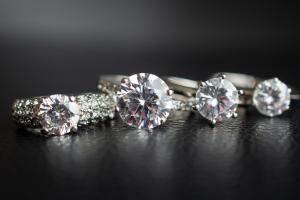
Understanding the Value of Precious Metals
Factors That Determine the Value of Precious Metals
The value of precious metals is influenced by several key factors, each playing a crucial role in determining their worth at any given time. Understanding these factors can help individuals make informed decisions when buying or selling gold, silver, or other precious metals.
1. Purity and Karat Rating
One of the most important factors in determining the value of precious metals is their purity. For example, gold is often measured in karats, with 24-karat gold being pure gold. Lower karat ratings, such as 18-karat or 14-karat, indicate that the gold is mixed with other metals, which can reduce its value. Silver and platinum are also measured by their purity, typically expressed as a percentage. Higher purity metals are generally more valuable, but their exact worth will also depend on other factors, such as weight and market demand.
2. Weight and Measurement
The weight of precious metals is another critical determinant of their value. Gold, silver, and platinum are often measured in troy ounces, a unit of measurement commonly used in the precious metals market. The heavier the metal, the more valuable it is, assuming that purity remains constant. When assessing the value of a piece of jewelry or a coin, the weight is typically calculated separately for the precious metal content, excluding any additional materials like stones or settings.
3. Market Demand and Economic Factors
The global market for precious metals is influenced by a variety of economic factors, including inflation, currency fluctuations, and geopolitical events. These factors can cause the prices of gold, silver, and platinum to rise or fall over time. For example, during times of economic uncertainty, gold is often seen as a safe-haven investment, leading to increased demand and higher prices. Conversely, when the economy stabilizes, the demand for gold may decrease, causing prices to drop.
Ken Bowers notes, "The value of precious metals is closely tied to market conditions. It's important to stay informed about global economic trends if you're considering buying or selling precious metals."
4. Historical and Cultural Significance
In addition to their intrinsic value, precious metals can also carry historical and cultural significance, which may enhance their worth. Antique jewelry, rare coins, and artifacts made from precious metals can be particularly valuable due to their age, craftsmanship, and historical context. Collectors and investors often seek out these items not only for their metal content but also for their rarity and unique history.
The Importance of Accurate Appraisal
Accurately determining the value of precious metals requires expertise and precision. Appraisers play a crucial role in evaluating the purity, weight, and overall worth of precious metals, whether they are in the form of jewelry, coins, or other items. A professional appraisal ensures that both buyers and sellers receive a fair and accurate assessment of the metal's value.
Ken Bowers emphasizes the importance of working with reputable appraisers: "An accurate appraisal is essential for understanding the true value of your precious metals. Whether you're buying or selling, knowing what your metal is worth can make all the difference in your transaction."
Considerations for Sellers
For those looking to sell precious metals, understanding the value of their items is the first step toward securing a fair price. Before selling, it is advisable to research current market prices and seek multiple appraisals to ensure that the offered price aligns with the metal's true value. Additionally, sellers should be aware of any fees or commissions that may be associated with the transaction, as these can impact the final payout.
Transparency and trust are key in any precious metal transaction. Working with established buyers and appraisers can help sellers feel confident that they are receiving a fair deal for their valuable assets.
Considerations for Buyers
For buyers, understanding the value of precious metals is equally important. Whether purchasing gold, silver, or platinum as an investment or for personal use, buyers should be informed about market trends, purity levels, and potential resale value. Additionally, buyers should seek out reputable dealers who provide detailed information about the metal's characteristics and offer transparent pricing.
Ken Bowers advises buyers to approach purchases with knowledge and caution: "Investing in precious metals can be a smart financial decision, but it's important to do your homework. Understanding the value of what you're buying is key to making a sound investment."
Conclusion
Precious metals have long been valued for their beauty, rarity, and enduring worth. Whether buying or selling, understanding the factors that determine the value of gold, silver, and other metals is essential for making informed decisions. By considering factors such as purity, weight, market demand, and historical significance, individuals can better navigate the precious metals market and ensure they receive fair value for their transactions.
Morgan Thomas
Rhino Digital, LLC
+1 504-875-5036
email us here
Visit us on social media:
Facebook
Distribution channels: Business & Economy, Consumer Goods, Culture, Society & Lifestyle
Legal Disclaimer:
EIN Presswire provides this news content "as is" without warranty of any kind. We do not accept any responsibility or liability for the accuracy, content, images, videos, licenses, completeness, legality, or reliability of the information contained in this article. If you have any complaints or copyright issues related to this article, kindly contact the author above.
Submit your press release

